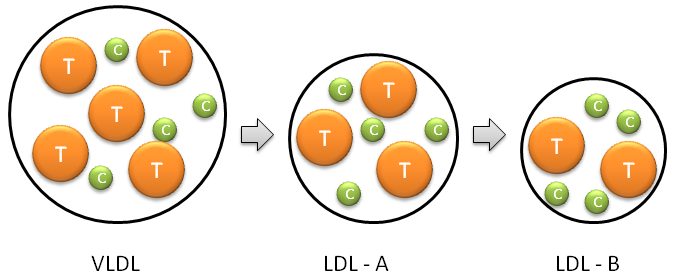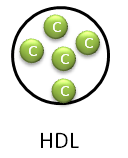Bio 101: HDL and LDL
Bio 101: HDL and LDL
You hear all the time about LDL, HDL, cholesterol and triglycerides but what exactly are they?
Blood lipids are all different types of fats that are transported throughout your body in your blood. Depending its composition there are: Cholesterol, Fatty Acids and Triglycerides.
Lipoproteins (e.g. HDL, LDL) carry cholesterol and triglycerides, allowing them to move through your blood and be transferred to/from your cells. When your doctor measures your "cholesterol" or lipids, they are actually measure these proteins and not your cholesterol directly.
Very Low Density Lipoprotein. All LDL starts out as VLDL created by your liver containing a mix of triglycerides and cholesterol. LDL's job is to bring triglycerides and cholesterol from your liver to your cells and this is where that process begins.
Low Density Lipoprotein. After VLDL has transferred enough of its triglycerides that there is more cholesterol than triglycerides, it becomes LDL.
LDL isn't bad or evil! Doctors like to measure you blood lipids because it's easy to measure and drug companies think they have a "solution" to the "problem". There are multiple theories about the cause of heart disease and LDL-B happens to be associated with a higher incidence of heart attacks. This does not mean that LDL is toxic, bad or causes heart disease. It's a necessary part of your body.
See my write-up, Cholesterol and Heart Disease for more information on why LDL isn't the evil culprit it's made out to be.

High Density Lipoprotein.
Mostly contains cholesterol. In addition the membrane is composed of different proteins than LDL; these proteins are anti-oxidants. HDL is considered "good" because it is protected from oxidation and acts as a garbage collector, sending used cholesterol back to the liver to be recycled.
